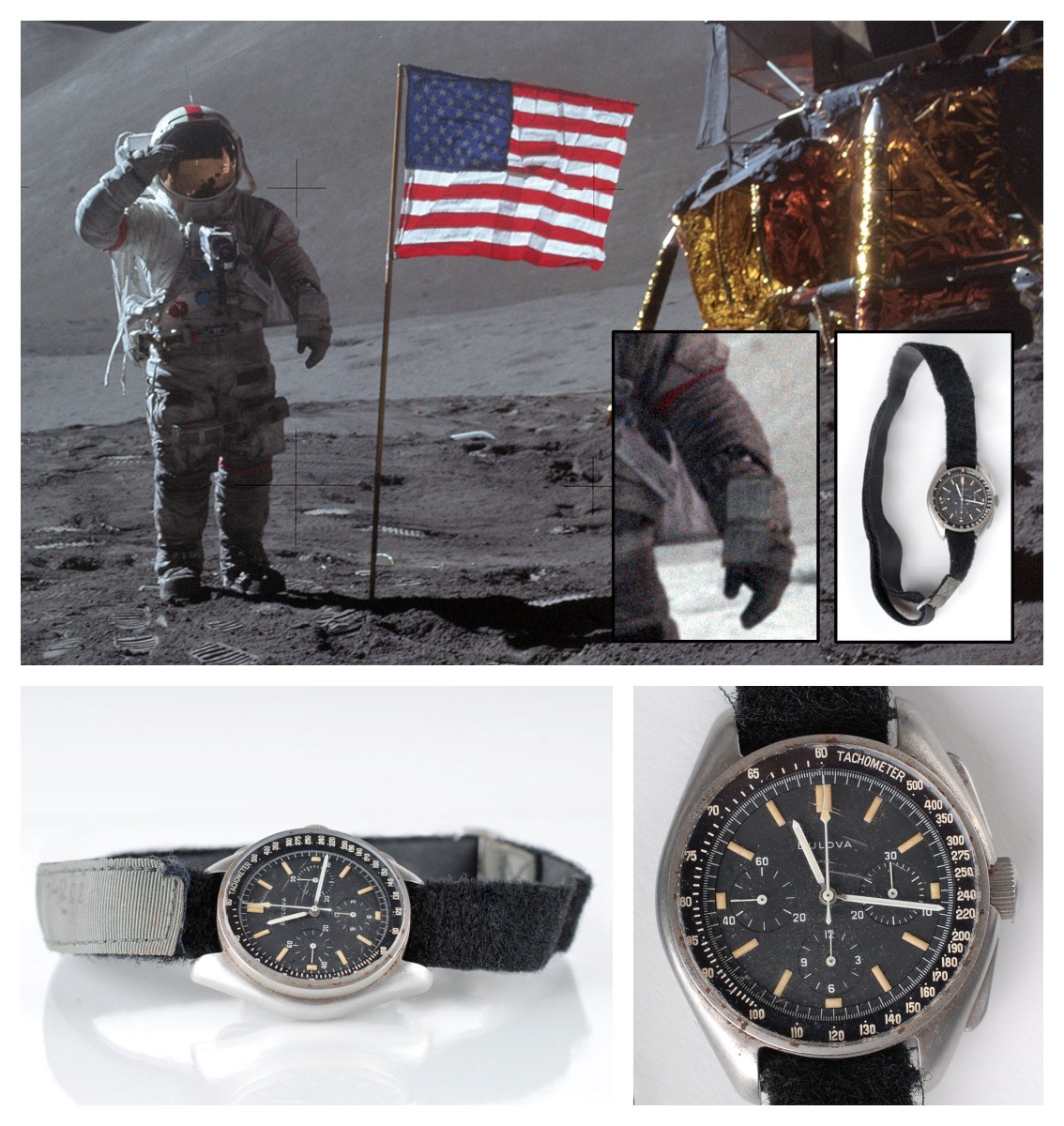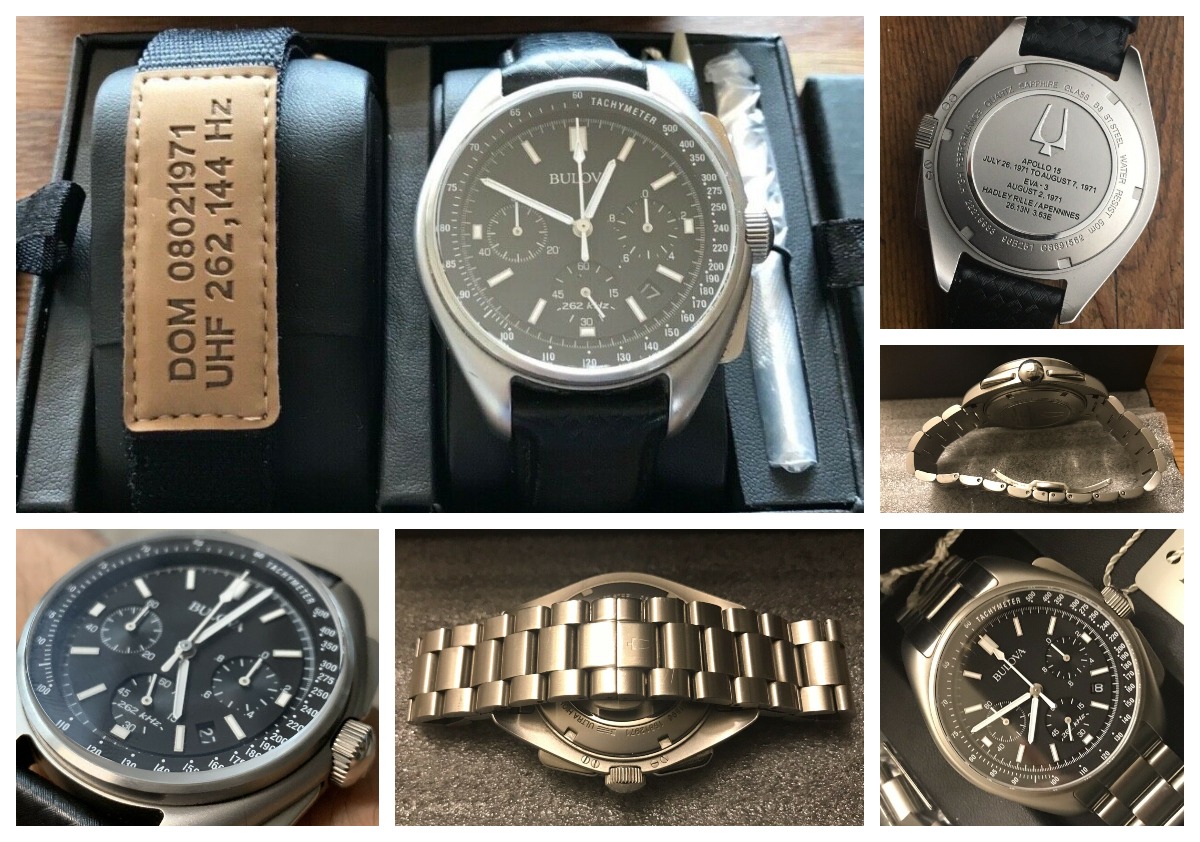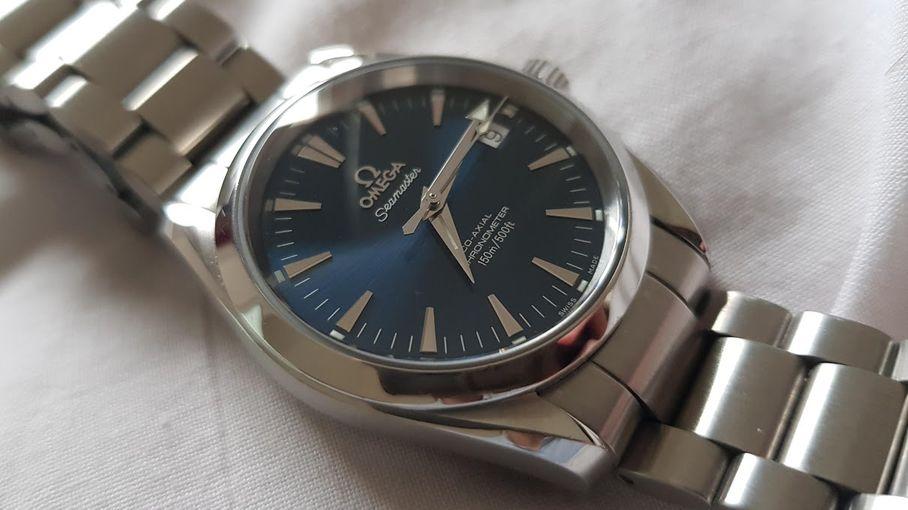Bulova “Moon watch” Lunar Pilot
The Bulova “Moon watch” is one of those timepieces that have been flying under the radar for decades before being recognized as a true historically relevant watch. It was worn on the Moon by astronaut David Scott during the Apollo 15 mission on his third moonwalk. This is the reason why this particular Bulova chronograph is also often called the “other Moon watch”.
Scott used his personal Bulova Chronograph because the crystal of his Omega Speedmaster got detached and was lost during his previous moonwalks. This chronograph was not explicitly approved by NASA, only the Omega Speedmaster was.
- Ref: 96B258, 96B251, 96A225
- Diameter: 45.00 mm
- Thickness: 13.50 mm
- Lug width: 19.00 mm
- Caliber: 262kHz quartz

In 2015, Bulova reissued this historic model, followed by another edition in 2017 with a few refinements: the Bulova Lunar Pilot Chronograph. The 2017 Bulova Lunar Pilot Chronograph has relatively large dimensions: 45mm diameter, 52mm lug to lug, 13.5mm thick.
However, on the wrist it wears more like a 43mm, due to the black coating of its stainless steel case, which makes it look smaller. The proportions of the markers and registers are also appropriate to the size of the dial, giving the watch a harmonious look despite its large dimensions. The lug width of the Lunar Pilot is a standard 20mm. The case is well finished, with matte black steel. The pushers are polished, creating a welcome break from the matte surface of the case.
- Ref: 98A186 (No date)
- Diameter: 45.00 mm
- Thickness: 13.50 mm
- Lug width: 19.00 mm
- Caliber: 262kHz quartz


The case looks very clean overall and complements well the dial, which is protected by a scratch-resistant flat sapphire crystal. This crystal is covering the tachymeter ring, it is protruding a little, adding depth to this watch and giving it a vintage feel.
Along the hour markers runs a ring on which a 1/5th seconds scale is placed. This scale is on the same depth level as the three sub-registers, which feature a concentric pattern of grooves. The sub-dial on the left is a 60 minute counter, the one on the right is a 1/10th of a second, whereas the one at the bottom shows the running seconds. The applied rectangular hour markers are easy to spot, providing very good legibility.
On the Lunar Pilot 2017 edition, the date window that was present at 4:30 in the earlier 2015 version has been removed. This removal improves the visual balance of the watch. The old Bulova logo is used on the dial of this watch, making it look closer to the historical Moon watch model. The 2017 Lunar Pilot chronograph comes with a mil-strap made of 2 individual parts and a leather back, which is of good quality.
This watch is powered by a high-performance quartz using a high frequency of 262 kHz. In the world of quartz watches, higher frequency means higher accuracy, and it's clear that the oscillating frequency of the crystal used in that movement is much higher than the average. If you accidentally start the chronograph, the 1/10th of a second hand will run for a maximum duration of 30 seconds, to ensure the battery power is not drained needlessly.
Retailing at $595, it is definitely not cheap for a quartz watch. This can, however, be justified by the fact that it offers a high-performance quartz movement in a very attractive and historical package. It can be considered as an affordable Omega Speedmaster alternative: it's also a Moon watch!
Explore
Explore

It is important to wear the right watch for the right occasion. Whether you’re going to the office, to an interview or to a wedding, a dress watch can complement your style and ...

Rolex developed the GMT-Master for airline pilots and released it in 1954. In 1983, the Rolex GMT-Master II was released. This model has become iconic and a reference for many in ...

First released in 2003, the Omega Aqua Terra was is a direct competitor to both the Rolex Oyster Date and the Explorer. The Omega Aqua Terra has a co-axial movement with a date ...
Join us!
Be part of the conversation